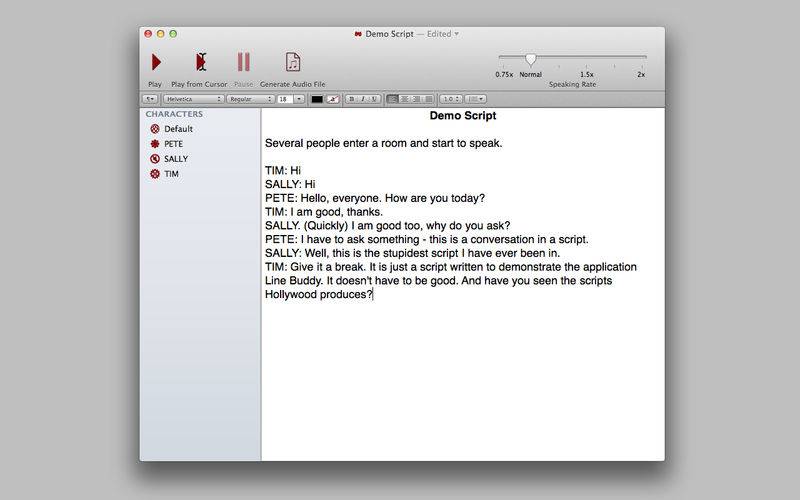With Line Buddy, you can create scripts that are performed using the built in voice synthesis functionality of your Mac. Scripts are manually entered or copied into a Line Buddy document. The characters in the script are identified as the script is entered and listed in the character list on the left. The voice used by each character can be selected from the list of voices installed on your Mac. The script can be "performed" by "playing" the script at any time. An audio file of the performance can be created which can then be put into iTunes and put on your favorite listening device.
If you are an actor learning lines for a role, you can create a document for each scene you are in or even an entire script. You can listen to the performance to learn your lines or mute the voice for your character to run the lines. The rate of speech in the performance can be adjusted depending on your needs and work methodology.
Line Buddy is built with most of the same abilities as documents created with the TextEdit application. Attributes of the text such as the font, justification, color, and several others can be set as desired. Line Buddy documents are saved and opened like regular files.
Watch the demo video at http://www.goodmanproductionsapps.com/line-buddy
In order for Line Buddy to properly find the characters and the lines, the script must be entered in a specific format. A line for a character must start at the beginning of a paragraph line with name of the character in uppercase followed by a period or colon.
The following sample would be recognized as a line for the character named Tim:
TIM: This is a sample line.
The following sample would not be recognied as a line for Tim because Tim is not all capitalized:
Tim: This is not a sample line that would be assigned to Tim.
Text starting on a new line that doesn't have a properly formatted character name is assigned to the "Default" character. Stage directions within lines - text within a line that is surrounded by parenthesis - are also spoken by the Default character. The text "Happily" and "The door opens" in the following sample would be given to the Default character:
TIM. (Happily) Come in. (The door opens.) Who is there?
The text for a line is terminated by a return/enter/newline character. Each new paragraph of text for a character must be started with the uppercase character's name followed by the period or colon or it will be assigned to the Default character.


